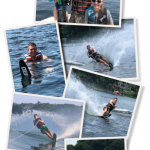
John Hardesty Bland, MD, professor of medicine emeritus at the University of Vermont College of Medicine in Burlington, died on March 15, 2007. He was midway through his 90th year, fulfilling the prescription of his last book, Live Long, Die Fast: Playing the Aging Game to Win, published when he was 80. A consummate rheumatologist and wonderful bedside doctor and teacher, Dr. Bland was also one of the genuine polymaths in the American medical world.
He was born in Globe, Ariz., and graduated from the Quaker-run Earlham College (remaining a practicing Quaker all his life) and from Jefferson Medical College in Philadelphia. He trained in medicine in Philadelphia and and then at the University of Vermont. He learned rheumatology from three giants: Walter Bauer, MD, former chief of medicine at Massachusetts General Hospital, Jonas Kellgren, MB BS, former chief of rheumatology at the University of Manchester, and Leon Sokoloff, MD, of the National Institutes of Health (NIH). He founded the rheumatology research unit at the University of Vermont and remained on the faculty from 1948 until his death.
As a medical resident, Dr. Bland became interested in the science of salt and water metabolism, just then being introduced into clinical practice from the physiological studies of Homer Smith, MD, and his colleagues. He studied and taught his fellow house officers this field. In 1952, he produced the first edition of his excellent text, Clinical Use of Fluid and Electrolytes. “See one, do one, teach one,” writ large, was the pattern for many of his numerous enthusiasms.
He and Dr. Sokoloff published a splendid monograph on the musculoskeletal system in 1975, and Dr. Bland’s superb Diagnosis and Medical Management of Disorders of the Cervical Spine was based on his deep knowledge of the literature, his own clinical experience, and more than 100 careful dissections of whole human cervical spines he had performed. He was elected a Master of the ACR in 1989.
Dr. Bland was a great outdoorsman—both active and contemplative. An acute observer of the natural world, he fell in love with mosses and lichens, published his lovely book, Forests of Lilliput: The Realm of Mosses and Lichens in 1971, and had been working on a field guide. A colleague recalled that, on outings, Dr. Bland would pick up a log or swim off to retrieve an interesting or instructive specimen.
Throughout his life, Dr. Bland had a remarkable career in sport. An excellent Nordic skier, he was a frequent medalist in National and World Masters Cross Country Ski championships. He served as a member of the medical advisory team of the US Nordic ski team and then as chief medical officer for Nordic Events at the Lake Placid Olympics. After a heart attack during a ski race at age 59, he took up marathoning and ran the grueling Boston marathon several times. He was also a competitive equestrian.
Dr. Bland loved teaching and writing for lay groups. He fervently believed in the reversibility of osteoarthritis of the hip and knee and of atherosclerotic arterial narrowing, and—while not exactly believing in immortality—prescribed his preferred alternative in Live Long, Die Fast.
He was driven by a childlike curiosity and possessed boundless good nature and a delightful sense of fun. He was a wonderful father, friend, physician, and teacher. His funeral was a sad and joyous remembrance attended by hundreds—family, medical friends old and young, patients, skiers, equestrians, marathon runners, and farmers—all in one way or another his colleagues.
Dr. Plotz is chief of the arthritis and rheumatism branch of the National Institute of Arthritis and Musculoskeletal and Skin Diseases, NIH in Bethesda, Md.

